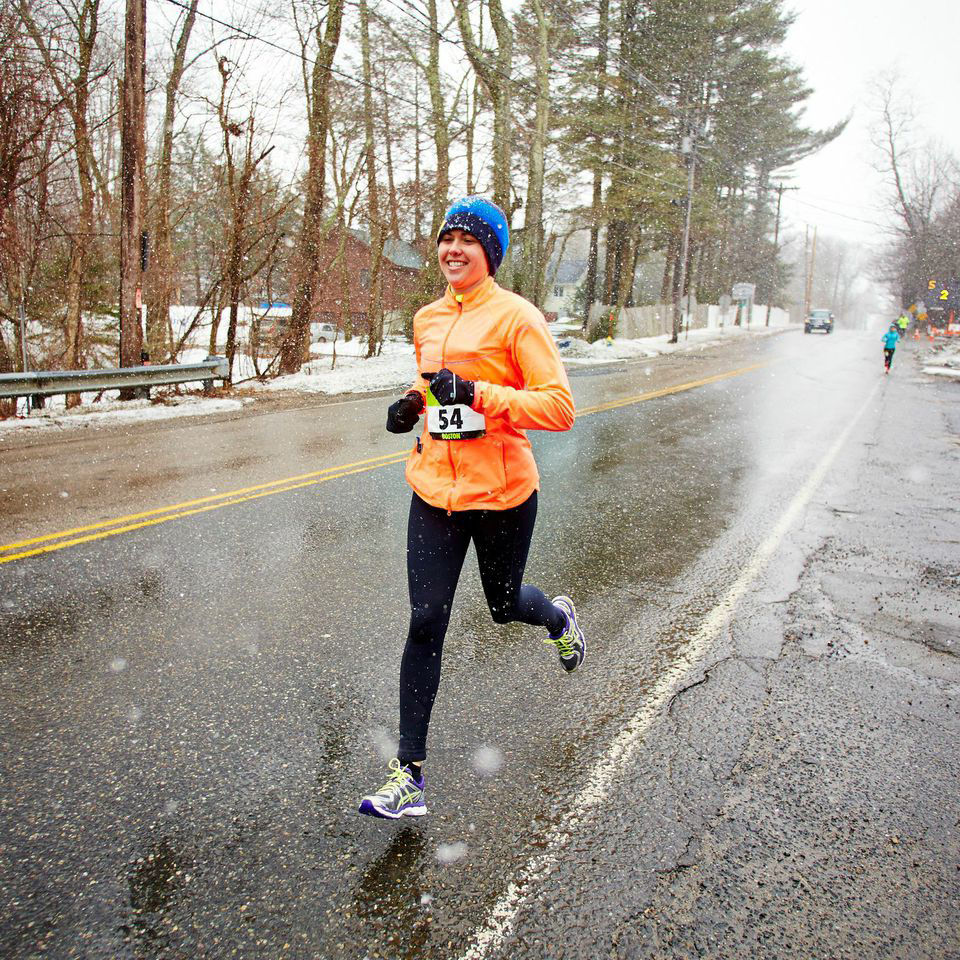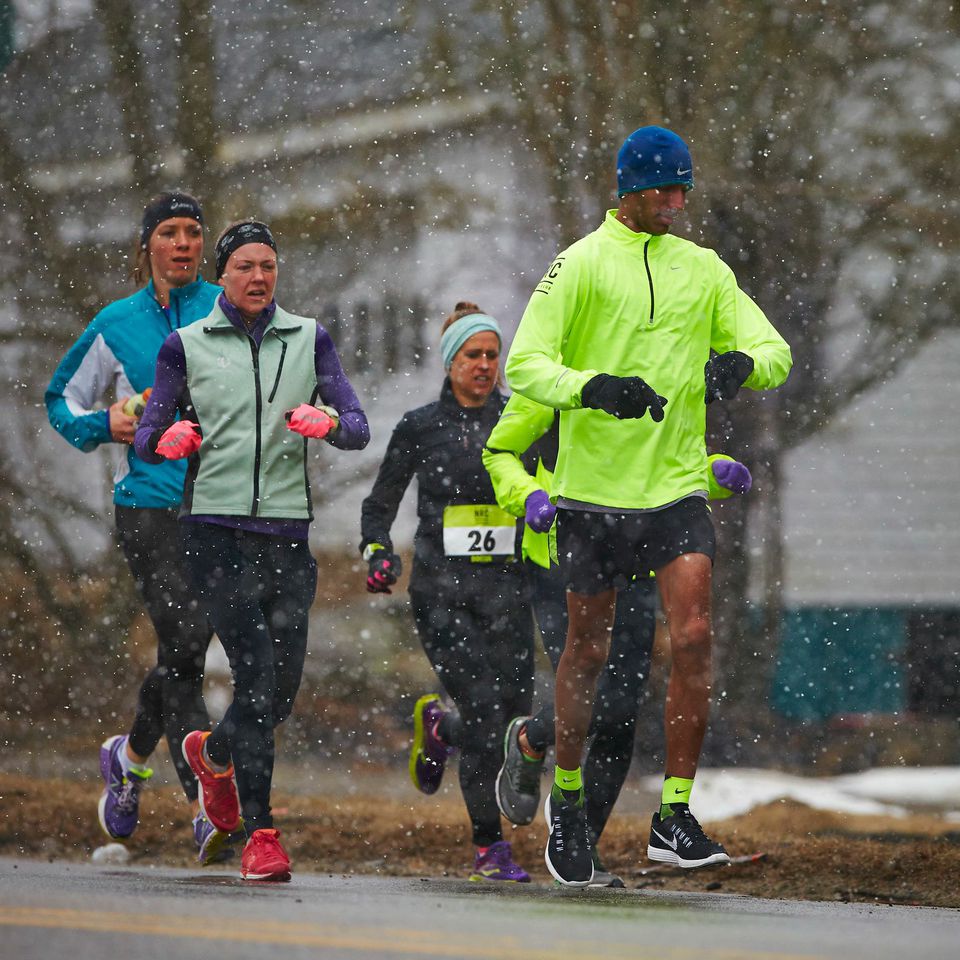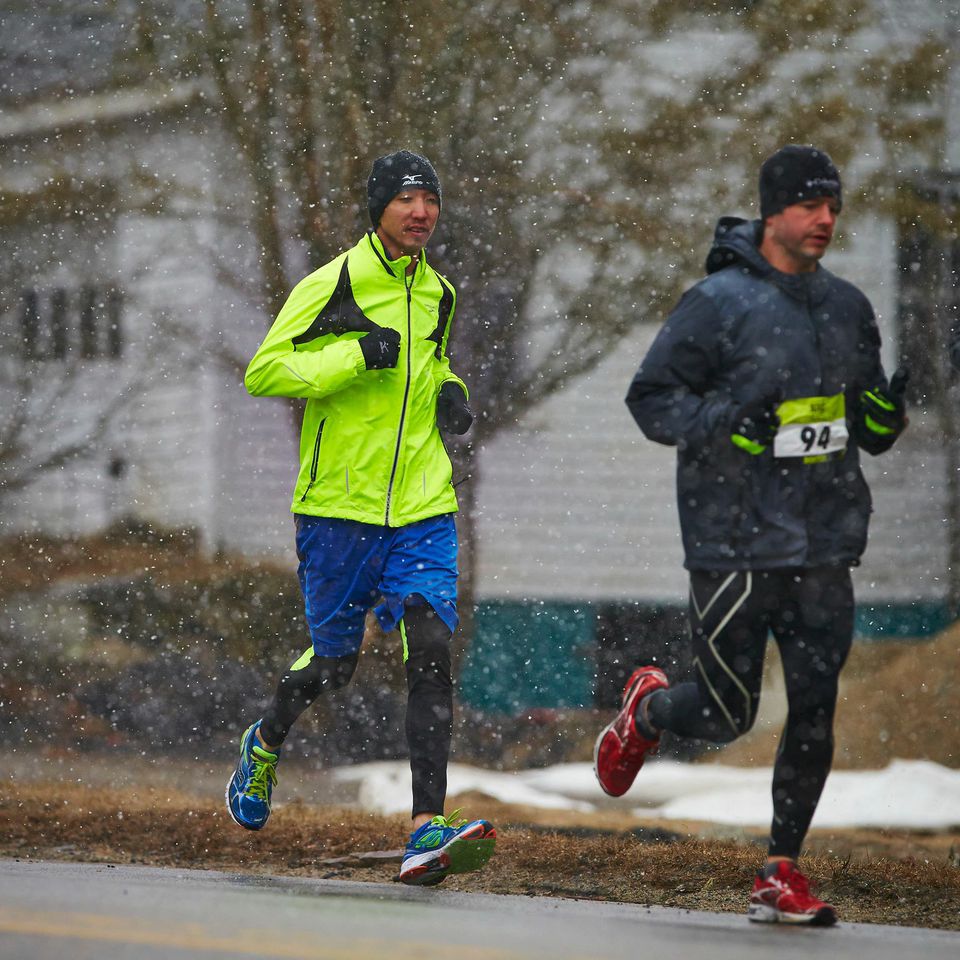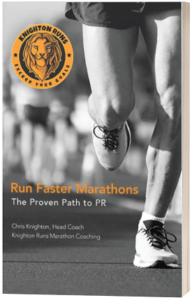Winter Running Guide: How to not be miserable running this winter
Winter Running Tips
This post was written by Coach Erica Knighton.

Woohoo! We just had our first major Nor’easter of the year and it brought upwards of 14 inches of snow in some areas and unwanted slop in other parts. But despite this, winter running is awesome if you are properly prepared. Do it right and you get to enjoy clean air, peaceful roads, and quiet nights. Today we share some easy tips and tricks in our winter running guide to help you run safe and stay warm in these crazy conditions (or winter wonderland).
Watch your step! – Finding Traction
The roads can be slick and covered in snow, ice, and slush, so pay attention to where you’re stepping. Don’t get down on yourself if you hit a long stretch of ice and you need to walk. Safety comes FIRST.
Black-ice forms as a result of the thaw-freeze daily cycle and is most common in the early mornings and at night. Watch out for slippery black-ice whenever running in the dark. Pay special attention to areas that the sun has not yet shined on, when running below underpasses, and on top of bridges.
Don’t try to set any speed records, it’s okay and probably good for you to slow down this winter anyway.
To gain some extra grip on icy roads, pick up a pair of Kahtoola NANOspikes Footwear Traction devices. These are an excellent way to increase your safety and confidence level when running in and around ice. For trail running and hiking use, the more gnarly Kahtoola MICROspikes Footwear Traction devices are the way to go.
For a dirt-cheap DIY alternative, take an old worn-out pair of shoes and install small screws on the tread to make your own ice-shoes!

Winter Running Dress and Get-ups
It’s starting to really feel like Winter and Mother Nature has put us in a deep freeze. Simply put, layering is the best way to make running through a New England winter more comfortable. It is the best way of dressing during physical activity to manage moisture and keep you warm on even the coldest of days. By layering multiple moisture-wicking fabrics on top of one another, we are creating a pathway for sweat to be removed from the skin, letting it evaporate right off the garment itself. Additionally, because moisture-wicking fabric is quick-drying, it performs exceptionally well during snow and rain.
No Cotton Please. Cotton is absorbent, which means as you sweat – which you will, even when it’s cold out – that cotton shirt just stays wet and cold against your skin. This is a recipe for disaster. So while your college hoodie is so nice and warm for lounging around the house, it’s not ideal on a run.
Don’t Overdress. The rule of thumb is to look at the thermometer and dress as if it is 20 degrees Fahrenheit warmer than that. If you feel warm when you step out the door, go back inside and take one layer off. An overheated body is not a happy one. You want to be a little cold when you first start out. I promise you will warm-up after 10 or 15 minutes.
Baselayers. Think of a baselayer as your winter running wardrobe staple. This is the piece from which you build your entire outfit. Your base layer takes sweat off your skin and brings it to the surface of the garment to evaporate, dries quickly, and keeps you nice and comfy. Look for a synthetic top with a snuggish fit against the skin. I’m a huge fan of Nike’s Dry-Fit line for base layer tops and tights. The top’s zipper allows me to open it up a bit if I start getting warm on long runs.
Running Jacket. I love putting on a water-resistant running jacket over my base layer. This layering combination works well for me down to the single digits in the rain or shine. The Nike Shield Running Jacket is my go-to. While not fully water-proof, it breathes well and finds the perfect balance of element protection and breathability for me.
Running Gloves. My hands get SO COLD in the winter. Frozen hands are my Achilles’ heel and have ruined many outings for me. So when it gets below 35 degrees Fahrenheit I don’t mess around with gloves. Get a pair of waterproof winter mittens, like these Carhartt Waterproof Insulated Mitts. Trust me when I say you’ll rather have hot and sweaty hands than frozen, useless claws.
Safety Glasses to block the snow. This is one of my favorite winter tips. Running when it’s snowing can really suck if the snow is getting in your eyes. It can make it almost impossible to see and totally ruin what would otherwise be a totally fine run. Pick up a pair of clear safety glasses like these 3M Safety Glasses and your visibility problems will be solved! This is truly a game-changer when it’s snowing.
Stay Bright and Visible while you run
Visibility is so critical when it comes to running through snow and in the dark. During a snowstorm, you are far less visible to traffic, so it’s important to make sure you’re wearing bright colors, reflective gear, and blinking lights. Back in the old days, reflective running vests made you look like a construction worker, but now they are pretty sleek. Noxgear makes a lightweight, breathable, and extremely comfortable vest that comes in a variety of fun colors. Always remember to run against traffic on a well-lit route with nice wide sidewalks when running after dark or on a low visibility day. For more on this, we wrote a full article on lights and reflective gear for running safely at night.

Winter presents unique challenges to us runners but getting out there is equally rewarding
Use this winter running guide to stay comfortable this chilly season. Grab a buddy or just get out there on your own. You’ll be rewarded with peace, quiet, and clear skies at night. The base you build by running through the winter will set you up for a great spring.




2 Comments
Derek M Cerjanec · February 3, 2021 at 12:35 PM
Great information! Useful and practical.
Coach Chris · February 3, 2021 at 3:03 PM
Thanks, Derek. The hardest part of running in winter is usually just building the courage to get outside! Then it’s easy.
Comments are closed.